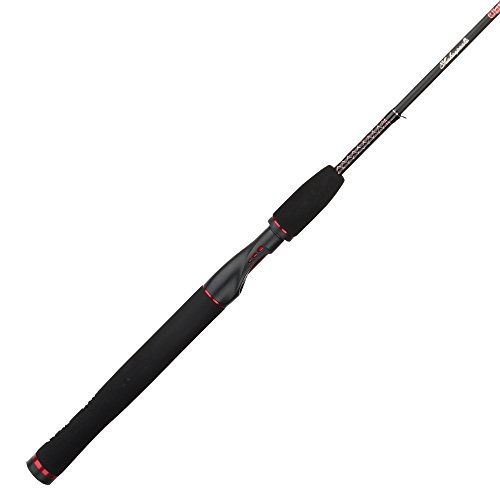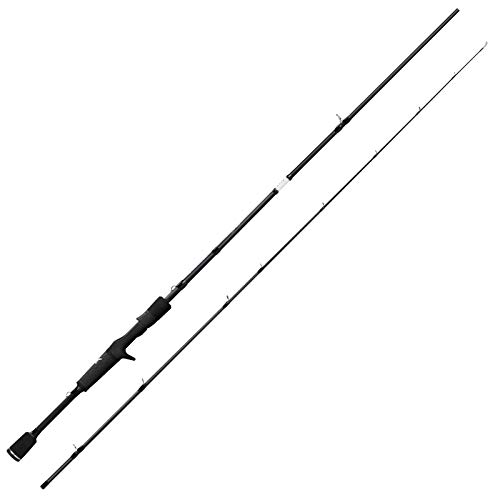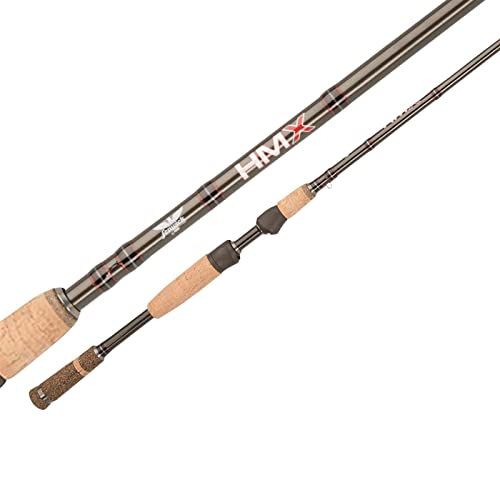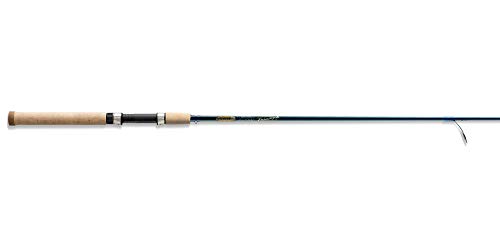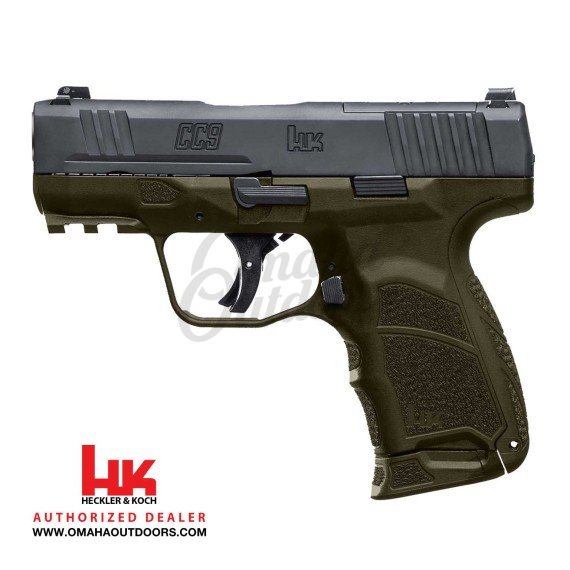Key Takeaways
- Basics of a Freshwater Fishing Spinning Rod are important to understand for beginners and seasoned anglers alike.
- Spinning Fishing Rods offer versatility and ease of use for a variety of fishing techniques.
- Rod Power plays a crucial role in determining the rod's strength and ability to handle different fish species.
- Rod Material impacts the rod's performance, durability, and sensitivity while fishing.
- Action Rod distinguishes itself by its flexibility and responsiveness to fish movements.
Understanding the Basics of a Freshwater Fishing Spinning Rod
When it comes to freshwater fishing spinning rods, there are several essential factors to consider to ensure you select the best spinning rod for your fishing needs. From the action and power of the rod to the length and weight, each aspect plays a crucial role in determining the rod's performance. Whether you are an experienced angler or a novice, understanding the differences in rod categories, such as ultra-light to extra-heavy, can greatly impact your fishing experience. By considering things like the lure weight range, backbone strength, and line recovery, you can narrow down your options and choose the best spinning rod for your pursuit. Top factors to bear in mind when choosing a spinning rod include the rod's action, power, length, and quality. By taking these considerations into account, you can ensure that you make a wise fishing rod purchase that will enhance your fishing experience on the water.
Importance of a Quality Fishing Rod in Freshwater Fishing
When it comes to freshwater fishing, the importance of a quality fishing rod cannot be overstated. Anglers need top-notch equipment to tackle various fishing techniques and fishing environments effectively. Selecting the right fishing rod is essential as it influences casting distance, accuracy, and control over fishing lines and lures. Anglers must consider factors such as the rod material, action, length, and power based on their fishing needs, preferences, and budget constraints. The market offers a wide range of spinning rods, including fiberglass and graphite rods, each with unique characteristics that cater to different fishing styles and situations. By understanding the dynamics of rod actions and materials, anglers can make an informed choice that maximizes their chances of success on the waters.
Choosing the best spinning fishing rod requires careful attention to detail and consideration of multiple factors. Anglers must look into the design, construction, features, and grip comfort of spinning rods to ensure optimal performance and comfort during fishing sessions. The balance, weight distribution, and flexibility of the rod play a significant role in reducing fatigue and enhancing casting accuracy. Additionally, the reel seat, action, and grip of the spinning rod should align with an angler's fishing style and technique. By researching different spinning rods and understanding their capabilities, anglers can make an informed decision that suits their fishing needs and budget considerations. Ultimately, investing in a high-quality spinning fishing rod boosts confidence, enhances fishing knowledge, and increases the chances of successful catches in various angling situations.
The Different Types of Fishing Rods and Their Uses
When it comes to selecting a fishing rod for freshwater fishing, there are several types to consider based on their distinct uses and characteristics. One of the top factors to consider when choosing a freshwater fishing spinning rod is the rod material. Rod materials such as fiberglass, graphite, composite, and others play a crucial role in determining the rod's performance and durability. For instance, graphite results in a lightweight and sensitive rod, perfect for finesse fishing for bass, while fiberglass offers toughness and durability, ideal for heavy-duty fishing for game fish. The differences in rod materials can affect various aspects of fishing, such as casting distance, accuracy, sensitivity, and power, making it essential to select the right material based on your fishing style and the species you are targeting.
Another critical aspect to consider when selecting a freshwater fishing spinning rod is the rod action. Rod action refers to how much and where a rod bends when pressure is applied, influencing the rod's performance in different fishing situations. Action rods come in various designs, such as extra-fast action, fast action, medium action, and slow action, each offering unique characteristics that cater to specific fishing needs. For example, an extra-fast-action rod provides quick hook-sets and precise casting for situations that require speed and accuracy, while a slow-action rod allows for more flexibility and forgiveness, making it suitable for fighting antics of larger fish like sea bass or dolphin. Understanding the essence of rod action and how it impacts your fishing experience can help you choose the best spinning rod that aligns with your fishing preferences and targets.
- Consider the handle type and length based on personal preference and comfort levels
- Evaluate the number of rod pieces for easy transport and storage
- Choose the appropriate rod length and power for the specific fishing technique
- Select a reel seat that securely holds the reel in place for optimal performance
- Opt for guides that reduce friction and improve casting distance
- Keep in mind the overall weight of the rod for extended fishing trips
Spotlight on Spinning Fishing Rods
When it comes to choosing a spinning fishing rod for freshwater fishing, there are many important factors to consider. One of the key things to look at is the rod's strength, as this will determine its ability to handle different situations and fish species. Casting accuracy and speed are also crucial considerations, ensuring that your presentations are on point and able to entice a strike. The right spinning rod can make all the difference in the world, turning lackluster results into successful catches. In addition, paying attention to the number and type of guides, reel seats, and reels can enhance your leverage in battles with feisty fish. Durability matters too, so checking for signs of wear and corrosion, especially on the guides, is essential. By taking all these factors into account, you can choose the best spinning rod to suit your fishing needs in fresh water.
$99.95
4.99 out of 5 starsFenwick HMX Spinning Rod
Premium quality fishing gear for all your angling adventures
Product information
Product Review Score
Product links
Why Spinning Fishing Rods Are the Go To Choice for Freshwater Fishing
When it comes to freshwater fishing, spinning fishing rods are the go-to choice for enthusiasts and experts alike. One of the top factors to consider when selecting a freshwater fishing spinning rod is its power rating. Spinning rods offer a wide range of power ratings to suit different fishing needs, whether you're going after bass in Gainesville or exploring saltwater fishing for mackerel and bonito. The versatility of spinning rods makes them a popular choice among anglers of all levels, from beginners to seasoned fishermen. With options in carbon fiber rods, graphite rods, fiberglass rods, and more, there is a spinning rod for every type of fish and fishing conditions, making it the perfect choice for all your fishing adventures.
The materials used in spinning rods also play a crucial role in their durability and performance on the water. Graphite rods, fiberglass rods, and even composite materials offer different strengths and corrosion resistance levels, allowing anglers to choose the best material for their fishing needs. Additionally, the action and power of spinning rods are significant factors to consider. The action of a rod refers to the degree of bend it has when pressure is applied, affecting how it responds to movements of fish and lure weights. On the other hand, the power of a rod indicates the amount of pressure needed to bend the rod, influencing its strength for handling different size fish. By understanding these key attributes and selecting the right spinning rod based on your fishing style and preferences, you can ensure an enjoyable and successful fishing experience every time you head out on the water.
Using Spinning Rods for Bass Fishing: Benefits and Drawbacks
When it comes to bass fishing, using a spinning rod can offer various benefits and drawbacks. One of the top factors to consider when selecting a freshwater fishing spinning rod for bass fishing is the rod power. Rod power denotes the rod's capability to handle different lure weights and fish sizes. Choosing a medium-action rod will give you a good balance between flexibility and power, making it suitable for bass fishing. However, a drawback of using a medium-action rod is that it may lack the necessary backbone to handle heavy cover or big fish.
Another crucial aspect to look at when using spinning rods for bass fishing is the fishing rod length. Selecting the right fishing rod length can significantly impact your angling setup. A longer rod can help you cast further and provide better control for certain techniques like working topwater walking lures. On the downside, a longer rod may feel less accurate in tight spaces or when casting under overhanging branches. Therefore, when choosing a fishing rod length for bass fishing, it's essential to consider the type of waters you'll be fishing in and the specific techniques you plan to use.
4.34 out of 5 starsSt. Croix Triumph Spinning Rod Ultra-light/Fast ULF
Experience superior performance on the water with the St. Croix Triumph Spinning Rod Ultra-light/Fast ULF
Product information
Product Review Score
Product links
Breaking Down the Rod Power
When choosing a rod for freshwater fishing, understanding the importance of rod power is essential. Rod power determines the rod's strength and ability to handle different types of lures and fish species. Consider the Top Factors to Consider When Selecting a Freshwater Fishing Spinning Rod, including the rod's power that matches the fish you intend to catch. Factors like drag system, rod length, and lure weight also play a significant role in selecting the right rod. For beginners and experienced anglers alike, having the proper rod power will make all the difference in your fishing experience.
Significance of Rod Power While Fishing
When it comes to freshwater fishing, the significance of rod power cannot be overstated. It is one of the top factors to consider when selecting a freshwater fishing spinning rod. Understanding rod power helps in determining the performance components required for successfully landing fish bites, especially those from largemouth bass. It's crucial to keep in mind that rod power and action are two distinct rod components that work in unison to provide the necessary control and leeway while fishing. Choosing the appropriate rod power ensures that your rod can handle different sizes and types of fish, giving you the versatility needed for various angling scenarios.
Selecting the right rod power for freshwater fishing is essential to avoid the common misconception that heavier rods always outperform lighter ones. It's vital to consider the balance between power and control to optimize your fishing experience. For instance, when using spinning rods for bass fishing, having a rod with the right power allows you to adapt to different fishing techniques and environments. From finesse fishing in rivers to battling larger fish in lakes, the rod power directly impacts your ability to feel even the slightest bites and set the hook with precision. By paying attention to rod specs and feedback from experienced anglers, you can choose a rod power that suits your fishing style and preferences, ensuring an efficient and enjoyable fishing trip every time.
How to Choose the Right Rod Power for Freshwater Fishing
When it comes to choosing the right rod power for freshwater fishing, there are several top factors to consider. The weight classes, casting poles, and spinning rods all play a crucial role in your fishing success. Whether you are targeting bass, marlin, or rainbows, selecting the appropriate rod size and reel will greatly impact your fishing experience. From hook lures to hardbody lures, the rod power must be matched to the bait and fish line you are using. Understanding the action type and rod parameters is essential for matching your rod-reel setup to the species you are targeting. Taking into consideration the structure of lakes, ponds, or even mangroves where you plan to fish, and the type of fish you want to catch, will guide you in the right direction when choosing the best spinning rod for your needs.
Choosing the optimal rod power can make a significant difference in your fishing adventures. For instance, if you are a novice angler, starting with a spinning rod may be the best choice due to its versatility and ease of use. Moreover, the flexibility it offers allows for various fishing techniques, such as casting and trolling. When selecting a rod size, consider the size reel and the test line it can handle, whether monofilament or braided line. The rod’s sensitivity plays a vital role in detecting even the slightest nibbles underwater. By matching the rod-reel combination correctly, you can cover a wide range of fishing scenarios, from bank fishing to surf fishing and even boat fishing. In the end, the selection of your rod power should be based on the fishing gear you have, the species you are targeting, and the fishing experience you aim to achieve.
| Rod Power | Recommended Species | Recommended Line Weight | Recommended Lure Weight | Recommended Fishing Techniques |
|---|---|---|---|---|
| Ultra-Light | Trout, Panfish | 2-6 lb | 1/32 - 1/8 oz | Small Jigs, Spinners, Light Line Techniques |
| Light | Bass, Walleye | 6-10 lb | 1/8 - 1/4 oz | Topwater Lures, Soft Plastics, Finesse Techniques |
| Medium-Light | Bass, Trout, Walleye | 8-12 lb | 1/4 - 3/8 oz | Shallow Crankbaits, Jerkbaits, Spinnerbaits |
| Medium | Bass, Pike, Catfish | 10-17 lb | 3/8 - 3/4 oz | Jigs, Texas Rigs, Carolina Rigs, Medium Crankbaits |
| Medium-Heavy | Bass, Musky, Striped Bass | 12-20 lb | 1/2 - 1 oz | Heavy Jigs, Swimbaits, Large Crankbaits |
| Heavy | Pike, Catfish, Salmon | 15-30 lb | 3/4 - 2 oz | Heavy Cover Fishing, Frogging, Flipping |
| Extra-Heavy | Sturgeon, Tuna, Marlin | 30+ lb | 2+ oz | Big Game Fishing, Deep Sea Fishing |
The Mystery Wrapped in Rod Material
When diving into the mystery of rod material in the world of fishing, it's essential to consider the abundance of options available. From graphite options that offer flexibility and sensitivity to aluminum reels that provide durability, each material brings something unique to the angler's platform. Whether you're looking for a rod-reel combo that excels in salmon jigging setups or catfish combos for fishing in saltwater, the material of your rod plays a crucial role in the overall performance. Understanding the correlation between the rod material and the rod setup is vital, especially when factoring in the specific purpose of your fishing expedition. Be it the hi mark of a hi-quality rod like the NRX spinning rod or the price difference between a basic rod-reel combo and high-end series reels like the Banax ST-3000C, rod material significantly impacts your fishing experience. Beginners and experts alike should carefully read through the specifics and specs of different materials to make informed decisions when selecting a fishing rod that suits their needs best.
Exploring Different Rod Materials and Their Benefits
When it comes to exploring the different rod materials and their benefits, one of the top factors to consider when selecting a freshwater fishing spinning rod is the type of material used in its construction. Rod material plays a crucial role in the performance and durability of the rod. For instance, graphite varieties are known for their lightweight and sensitivity, making them a popular choice among anglers who prioritize accuracy in their fishing technique. On the other hand, fiberglass rods offer more flexibility and strength, making them suitable for heavy-duty fishing in freshwater lakes or ponds. Understanding the characteristics of each material will help you make an informed decision when choosing the best spinning rod for your fishing needs.
In addition to rod material, another key consideration for anglers is the rod length and line weight range when it comes to selecting a fishing rod. Different fishing techniques and target species may require specific rod lengths and line weights to ensure optimal performance. For example, when targeting sunfish in freshwater lakes, a shorter and lighter rod may be more suitable for precise movements and delicate presentations. On the other hand, when fishing for sea bass or cod in saltwater, a longer and heavier rod with a higher line weight range may be necessary to handle larger fish and rougher sea conditions. By matching the rod length and line weight to your fishing needs, you can improve your chances of landing your desired catch with ease.
- Consider the action (fast, moderate, slow) of the rod for specific fishing techniques.
- Check the reel seat material for compatibility with your chosen reel.
- Look for rod guides made of durable materials like titanium or stainless steel for smooth line flow.
- Evaluate the rod handle material (EVA foam, cork, or other options) for comfort during long fishing sessions.
- Research the warranty and customer service provided by the rod manufacturer for added peace of mind.
Selecting Rod Material Key Considerations
When selecting a rod material for your freshwater fishing spinning rod, there are a few top factors to consider. First and foremost, you need to think about the type of fishing you will be doing and the fish you will be targeting. Different rod materials have varying levels of strength, flexibility, and durability, so understanding your specific needs is crucial. Additionally, consider the weight ratings of the rod material, as this will impact your casting distance and overall fishing experience. Research different rod materials and their advantages to ensure you select the best one for your purposes.
Another key consideration when choosing a rod material is the absorption and action fiberglass offer. Fiberglass rods are known for their flexibility and forgiveness, making them ideal for beginners or those looking for a more relaxed fishing experience. On the other hand, graphite rods are incredibly sensitive and offer excellent power and responsiveness, making them perfect for anglers who want to feel every nibble. Understanding the differences between these materials will help you make an informed decision based on your fishing needs and preferences.
Action Rod – What Sets it Apart?
When delving into the realm of fishing gear, one cannot overlook the significance of an action rod. It is essential to understand what sets an action rod apart from other types of fishing rods. Action rods are known for their flexibility and responsiveness, making them ideal for various angling methods. Whether you're targeting bass in freshwater inland or tackling sea monsters along the coast, an action rod can provide the strength and sensitivity needed to handle different fish species. When selecting a freshwater fishing spinning rod, the action of the rod is one of the top factors to consider. The right action rod can enhance your fishing experience, whether you are a novice angler or an elite professional.
Photo by Pablo Gutierrez on Pexels
Understanding the Unique Characteristic of an Action Rod
When delving into the realm of freshwater fishing spinning rods, one must pay close attention to the top factors that come into play when selecting the most suitable equipment for the job. Among countless considerations, the choice of rod material, length, and power are paramount for achieving optimal performance. Whether you're casting for bass near the dock at Cape Cod or jigging action at different depths, the action of the rod plays a crucial role in your fishing world. Understanding the unique characteristic of an action rod, such as its response to different fishing scenarios, can make all the difference in your angling experience. From the rod build to the operation, the action rod's versatility makes it a top pick for anglers like Joel and Dave Sean looking to adapt to various fishing patterns and terrains.
Furthermore, when it comes to selecting the right action rod, it's essential to consider aspects like lure compatibility, reel seats, and lure sink ratios to ensure smooth fishing operations. For enthusiasts like Kelly and Brady Schroeder navigating the flats of Washington State or the bays of Virginia, having an action rod that offers precision casting distances and the power to reel in snook or pompano is crucial. In the comments section of fishing forums, avid anglers like Fazi and Shaun discuss the advantages of using versatile action rods to match the sinkers and line weight capacities needed for different fishing scenarios. Whether you're casting spoons in the creeks of Virginia or trolling for bass in Lake Anna, the unique characteristics of an action rod can be the determining factor in your fishing success.
Conclusion
When selecting a freshwater fishing spinning rod, there are several important factors to consider. One of the top factors to keep in mind is the rod's build quality, as this can greatly impact your fishing experience. Additionally, understanding rod rigidity and the different rod materials available can help you make an informed decision. Another crucial aspect to consider is the rod power, which determines the rod's strength and ability to handle different fish species. Moreover, selecting the right rod length and action can also enhance your fishing performance. Ultimately, by carefully considering these factors and your personal preferences, you can choose the best spinning rod to suit your fishing needs.
FAQS
What is a freshwater fishing spinning rod?
A freshwater fishing spinning rod is a type of fishing rod designed specifically for freshwater fishing, using a spinning reel.
Why is it important to choose a quality fishing rod for freshwater fishing?
Selecting a quality fishing rod is crucial for freshwater fishing as it determines the overall performance, durability, and success of your fishing endeavors.
What are the different types of fishing rods and their respective uses?
There are various types of fishing rods such as spinning rods, baitcasting rods, and fly rods, each designed for specific fishing techniques and target species.
Why are spinning fishing rods the preferred choice for freshwater fishing?
Spinning fishing rods are popular among freshwater anglers due to their versatility, ease of use, and ability to cast light lures accurately.
How do you choose the right rod power for freshwater fishing?
Selecting the appropriate rod power is essential in freshwater fishing as it determines the rod's strength and ability to handle different fish species and fishing conditions.
